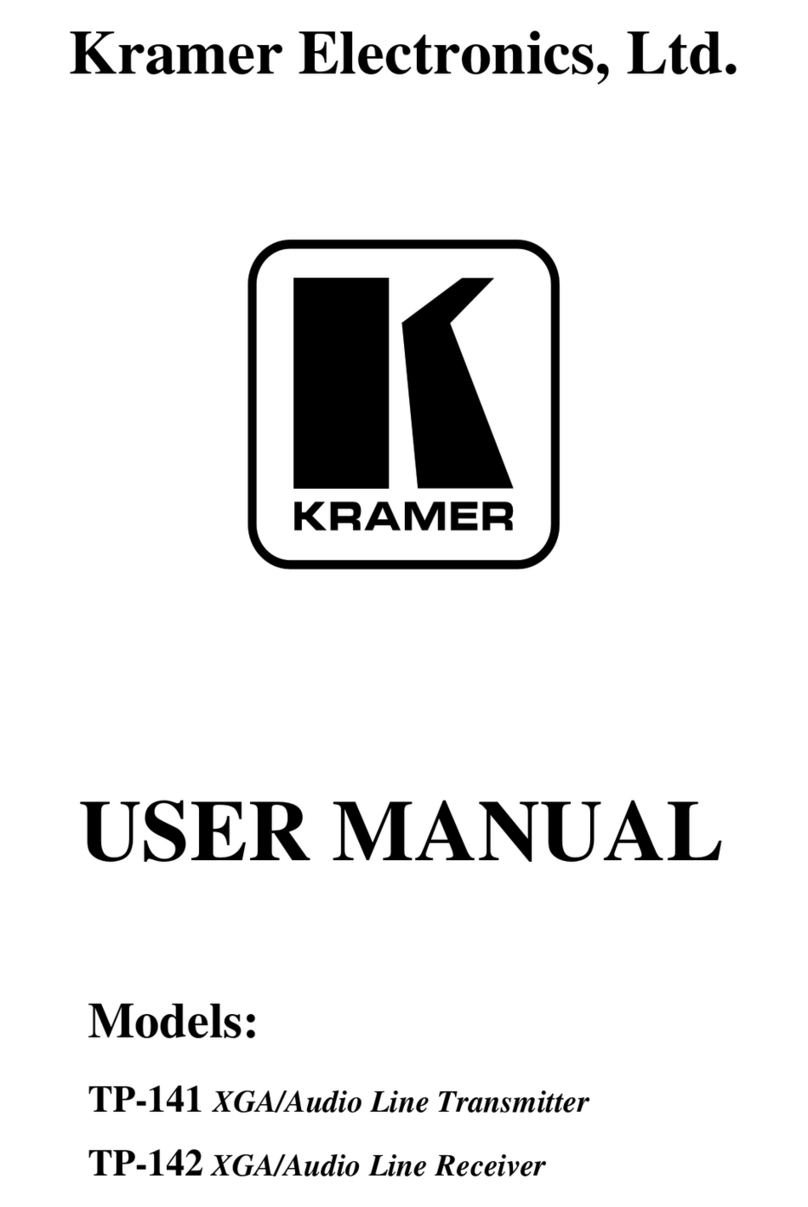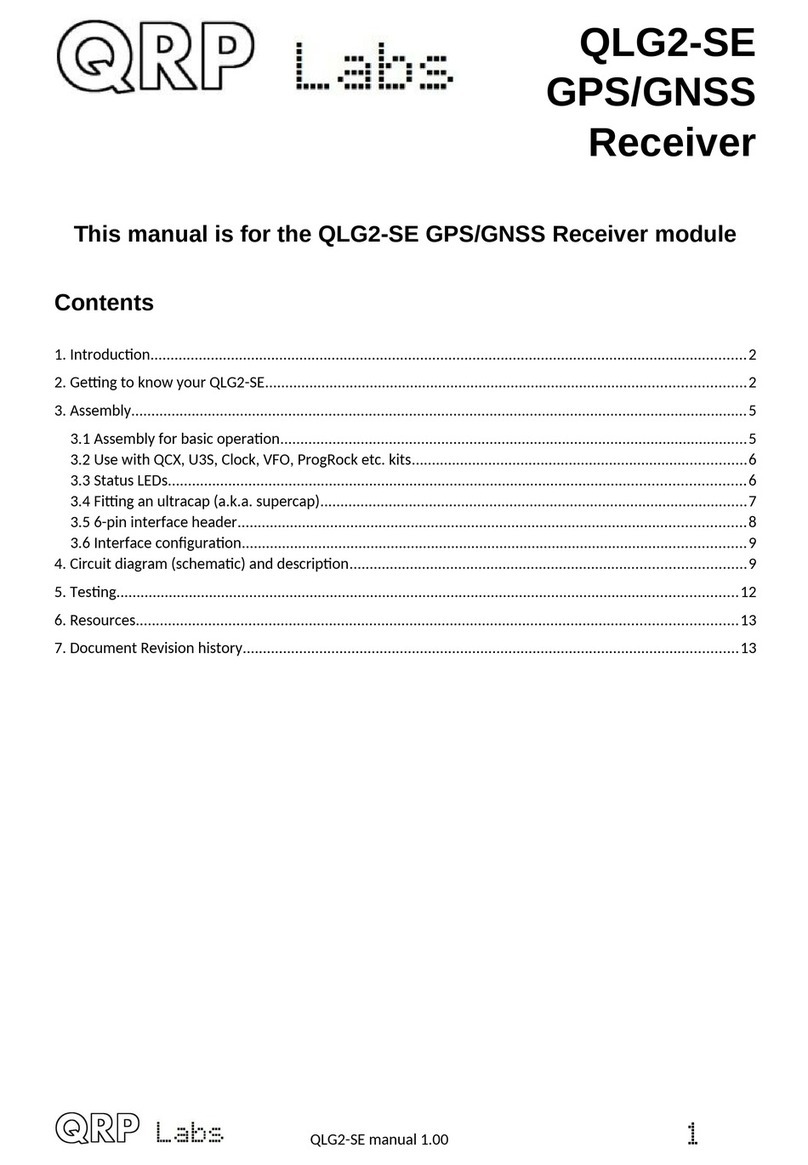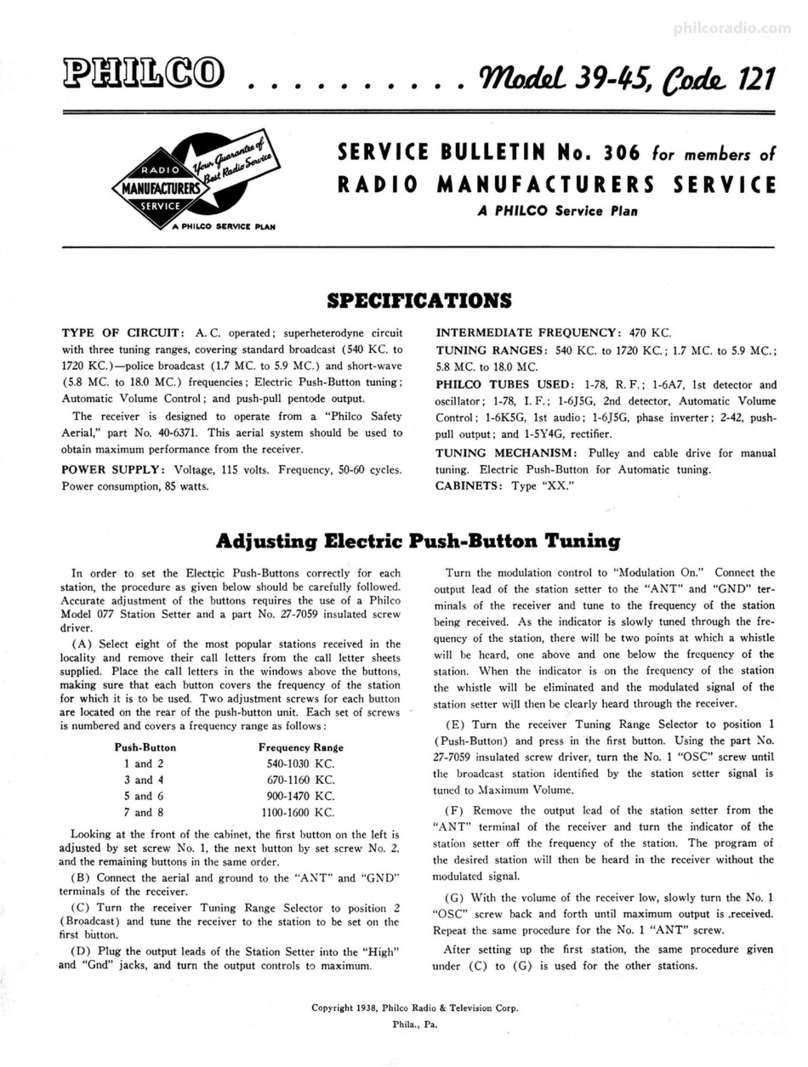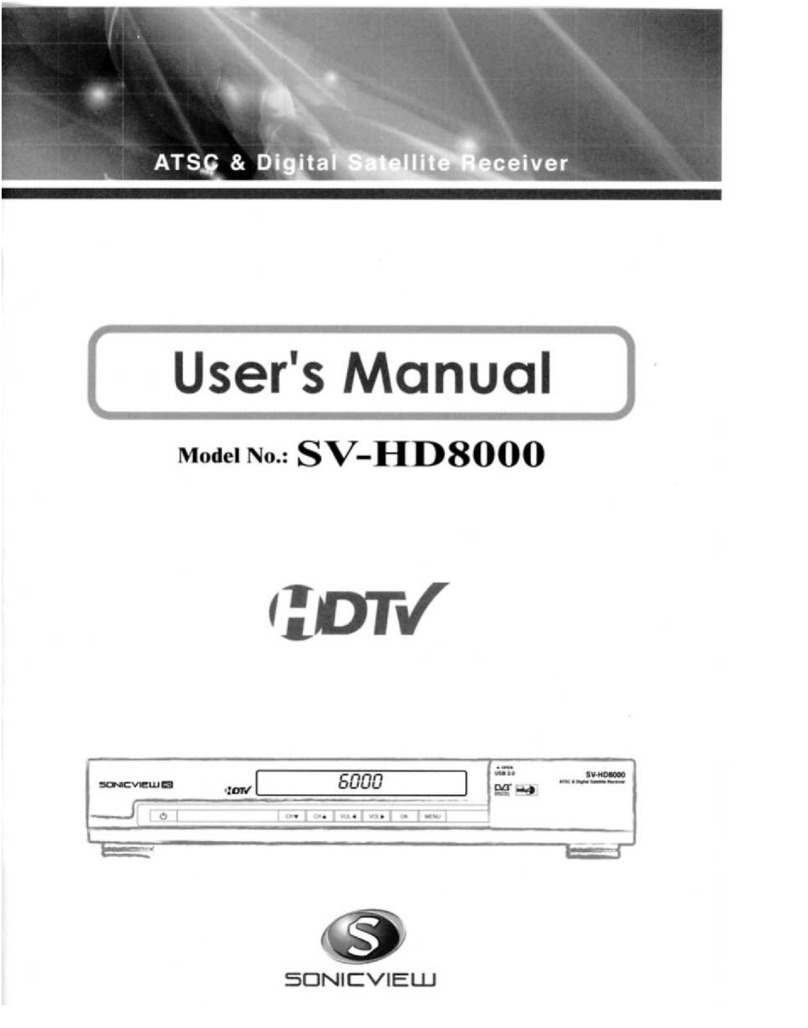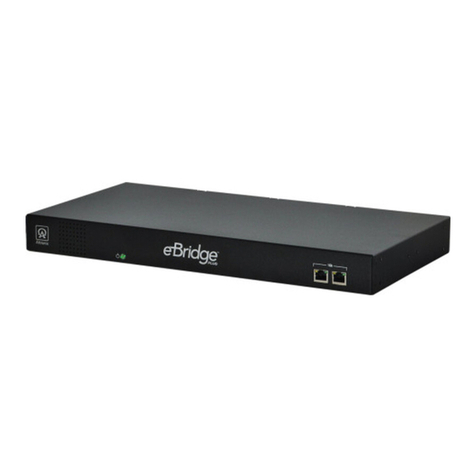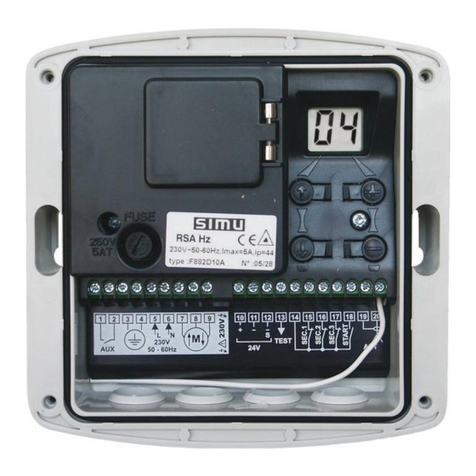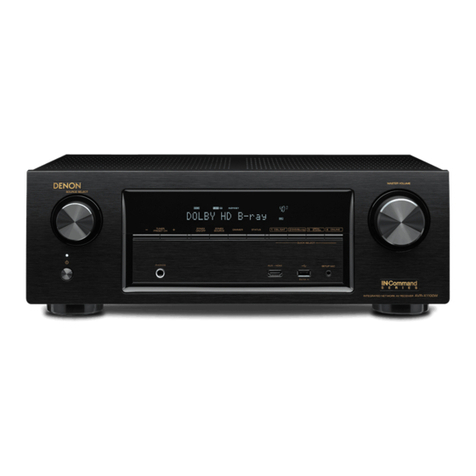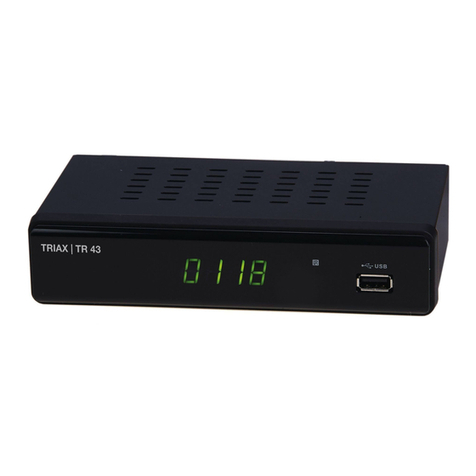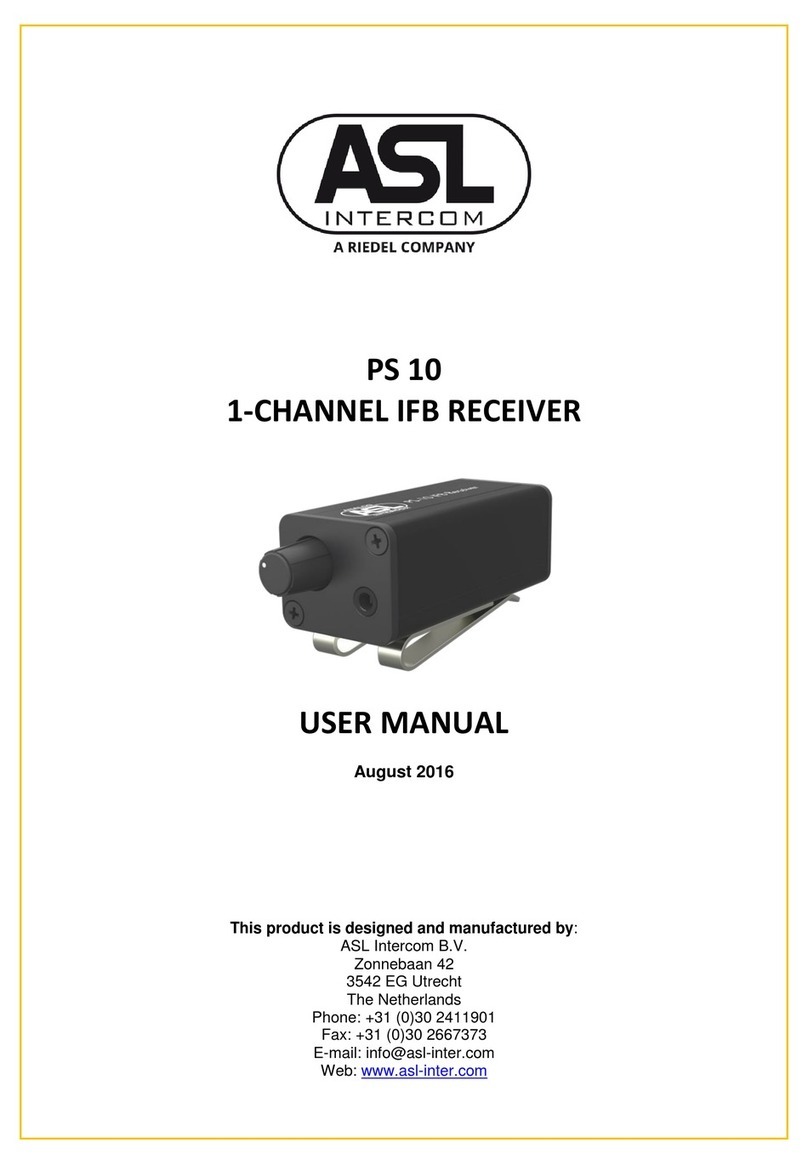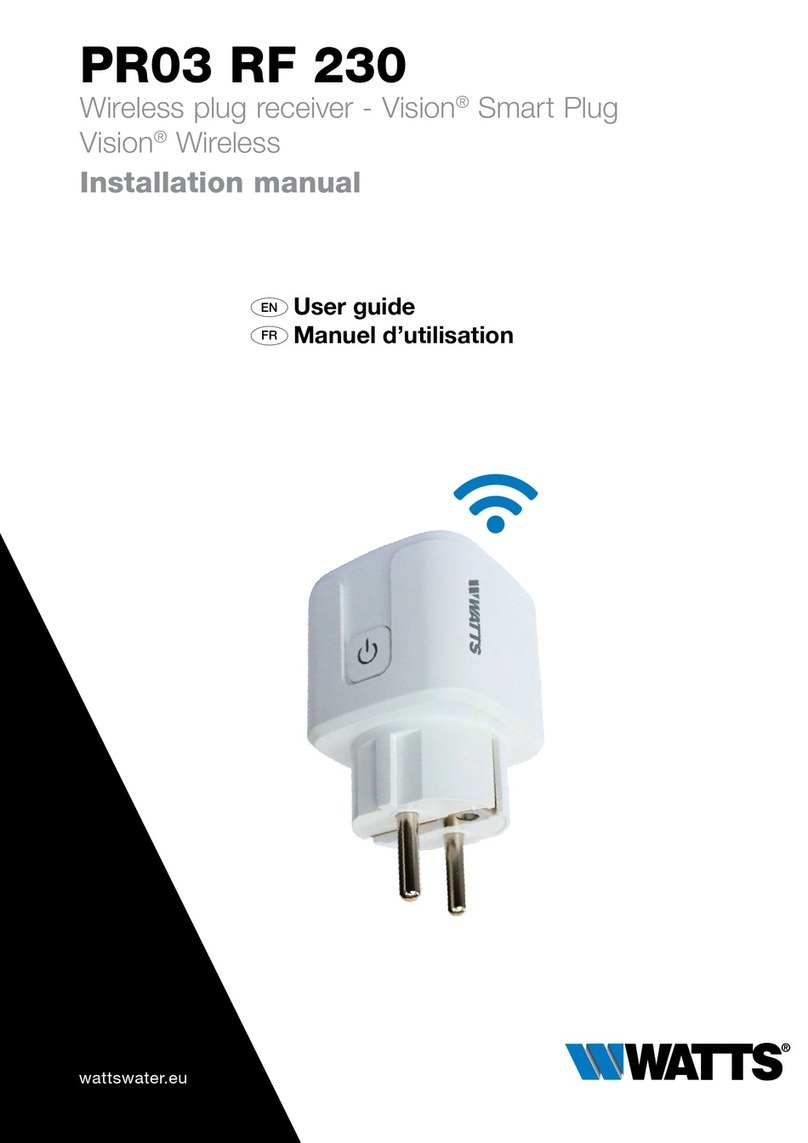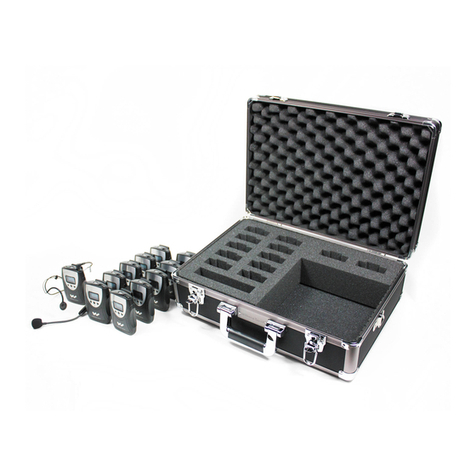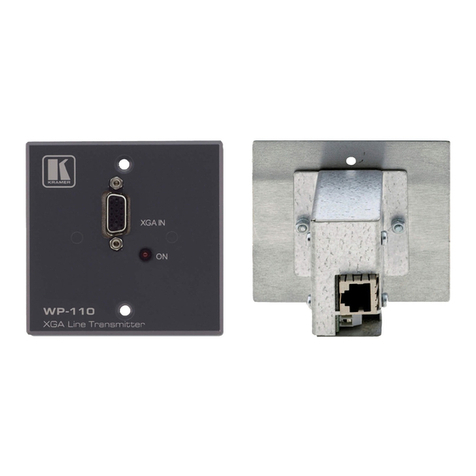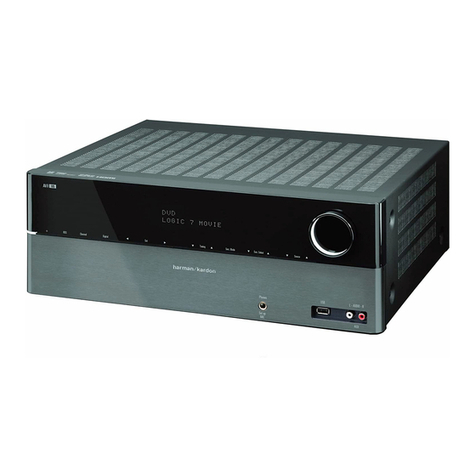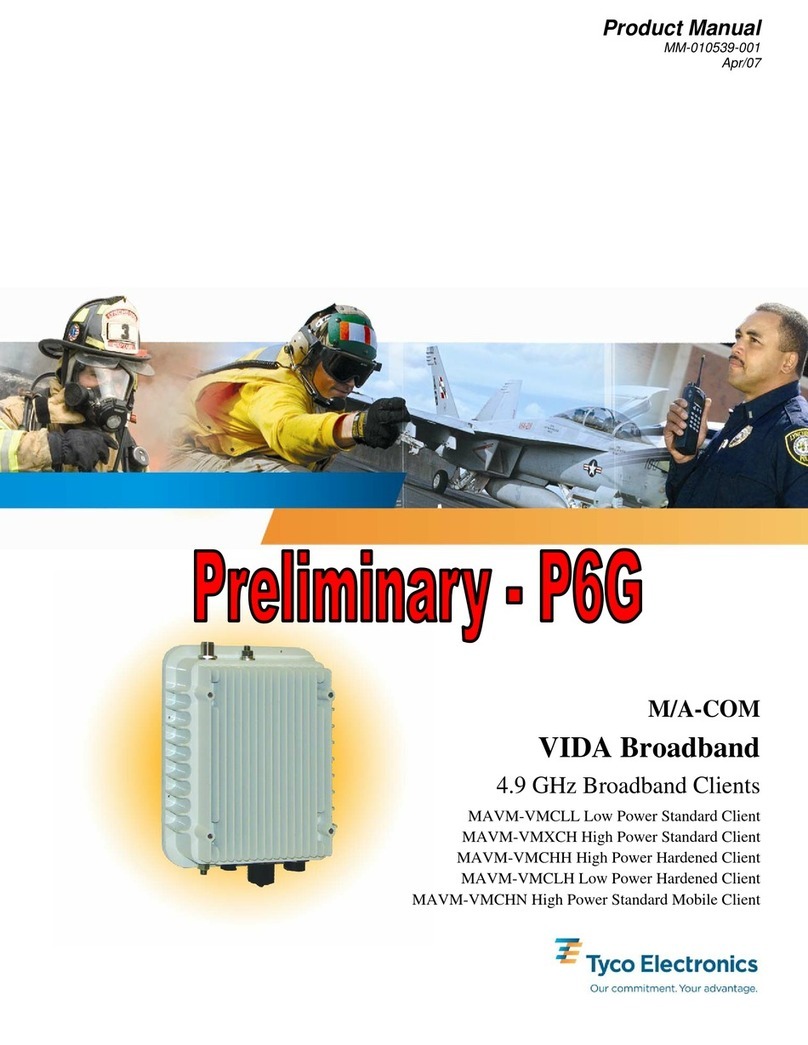nekos RR2-M User manual

INSTRUCTION MANUAL
RADIO RECEIVER
Electrical feeding 230V~ 433,92MHz
NEKOS S.r.l. -
Via Capitoni, 7/5
+39 0424 411011
EN
4420074 – Rev. 2003
RR2-M
INSTRUCTION MANUAL
RADIO RECEIVER
– 2 CHANNELS
Electrical feeding 230V~ 433,92MHz
Via Capitoni, 7/5
- 36064 Colceresa – VI
–
+39 0424 411011
– +39 0424 411013 - www.nekos.it -
info@nekos.it
–
ITALY
2
USER INSTRUCTIONS
CAUTION. Carefully observe all the following installation
instructions to ensure personal safety.
The device is not intended for use by persons (including
children) with reduced physical, sensory or mental capabilities,
or lacking experience and knowledge. Do not allow children to
play with the fixed controls and keep any remote-control units
out of their reach.
Have installation checks performed periodically by qualified
personnel from a service centre authorised by the manufacturer.
Do not use if repair or adjustment is required.
CAUTION. Disconnect the power supply during cleaning or
maintenance operations. Do not use solvents or jets of water to
wash the appliance; the appliance should not be submerged in
water.
In the event of fault or malfunction, switch off the device at the
main switch. All repairs and adjustments must only be
performed by qualified personnel from a service centre
authorised by the manufacturer.
Always request exclusive use of original spare parts. Failure to
respect this condition could compromise safety and invalidate
the benefits contained in the warranty for the appliance. In the
event of any problems or queries, consult your agent or contact
the manufacturer directly.
Carefully preserve these instructions after installation.
The product must be disposed of in compliance with
local environmental regulations and not as household
waste.

INSTALLER INSTRUCTIONS
nekos
products have been manufactured in accordance with safety standards and
conforms to the stipulations of current standards in force.
When correctly assembled, installed and used according to the present instructions, they
will not generate any danger for
Symbols used in the manual
DANGER
CONTENTS
Safety indications
................................
Characteristics
................................
Technical and constructional
ID plate and marking data
Schematic connection directions
USER’S MANUAL
1. Description
................................
A -
General characteristics
B - I/O Terminal block
................................
2. Operation
................................
2.1.
Operation with remote input (radio remote control)
2.2.
Operation with local input
3.
Definition of the functions
3.1.
“Lights Control” mode functions
3.2.
“Motor control” mode functions
4. Procedures
................................
Erasing the memory of the RR2
Erasing the radio remote control memory
Erasing a single ra
dio remote control
Selecting the device mode
Programming outputs 1 and 2 (lights mode only)
Programming the operation time
5. Radio procedures
................................
Learning the radio remote controls in lights mode
Learning the first remote control or additio
6.
Environmental protection
7.
Recall to main principles of warranty certificate
8. Declaration
of conformity
3
INSTALLER INSTRUCTIONS
products have been manufactured in accordance with safety standards and
conforms to the stipulations of current standards in force.
When correctly assembled, installed and used according to the present instructions, they
will not generate any danger for
persons, animals or items.
Symbols used in the manual
This indication draw the attention about potential
dangers for safety and health of peoples and animals.
................................
................................
................................
................................
................................
................................
Technical and constructional
information ................................
................................
ID plate and marking data
................................
................................
Schematic connection directions
................................
................................
................................
................................
................................
General characteristics
................................
................................
................................
................................
................................
................................
................................
................................
Operation with remote input (radio remote control)
................................
Operation with local input
(wall-mounted push-
button panel)
Definition of the functions
................................
................................
“Lights Control” mode functions
................................
................................
“Motor control” mode functions
................................
................................
................................
................................
................................
Erasing the memory of the RR2
-M receiver
................................
Erasing the radio remote control memory
................................
dio remote control
................................
................................
Selecting the device mode
................................
................................
Programming outputs 1 and 2 (lights mode only)
................................
Programming the operation time
-out ................................
................................
................................
................................
................................
Learning the radio remote controls in lights mode
................................
Learning the first remote control or additio
nal remote controls in motor mode
Environmental protection
................................
................................
Recall to main principles of warranty certificate
................................
of conformity
................................
................................
INSTALLER INSTRUCTIONS
products have been manufactured in accordance with safety standards and
When correctly assembled, installed and used according to the present instructions, they
This indication draw the attention about potential
dangers for safety and health of peoples and animals.
................................
.............. 4
................................
................... 5
................................
.......... 6
................................
................................. 7
................................
....................... 7
................................
................... 9
................................
.......................... 9
................................
.. 9
................................
..................... 9
................................
............... 9
button panel)
............................. 10
................................
........................... 11
................................
.......... 11
................................
........... 11
................................
................. 12
................................
.......................... 12
................................
............................. 13
................................
... 13
................................
.................... 14
................................
................. 14
................................
.... 15
................................
....... 16
................................
................ 16
nal remote controls in motor mode
..... 17
................................
............................ 18
................................
......................... 19
................................
............................ 20
S
AFETY INDICATIONS
General notes
ATTENTION:
Before installing this appliance, ensure all safety indications
have been read carefully and understood in order to prevent contact with
electricity, injury or any other incident. The manual should be conserved for
further consultation at a later date
The manufacturer accepts no responsibility for damage to
or things
incurred by improper use.
Use for any applications other than those indicated must be authorised by
the manufacturer after technical review of the assembly.
Plastic bags, polystyrene, small metal parts such as nails, staples
placed out of the reach of children as they constitute a potential source of risk.
Do not use solvents or jets of water to wash the appliance. The appliance should
not be submerged in water.
Notes for functioning and use
RR2-M
is a recessed radio receiver module, with 2 control relays, powered directly by the
230V~ (AC) 50/60 Hz mains power system, set up to receive radio commands from the PIK
series transmitter or commands with NEKOS protocol.
This product is designed to be
is chain and rack actuators. Use with any other products may result in damage or
malfunctions.
It is prohibited to open or drill holes in the plastic casing of the product, since
there are live parts
under the casing; do not cut or peel the antenna wire as it is
powered by the mains power system.
The receiver has been developed to control single
powered by mains electricity such as lamps or electric motors with powers up t
the specified maximum; any other use is prohibited.
After removing the packaging, check the integrity of the device.
This device is intended only and exclusively for the use for which it was designed,
and the manufacturer cannot be held liable for
The product is powered at a hazardous voltage. All electrical connections must be
made with the power cut off.
The product is intended exclusively to operate inside electrical junction boxes and
thus its casing has no
It is absolutely prohibited to use the product in environments other than those for
which it is intended.
The product must be disposed of in compliance with local environmental
regulations and no
t as household waste.
4
Before installing this appliance, ensure all safety indications
have been read carefully and understood in order to prevent contact with
electricity, injury or any other incident. The manual should be conserved for
further consultation at a later date
.
The manufacturer accepts no responsibility for damage to
incurred by improper use.
Use for any applications other than those indicated must be authorised by
the manufacturer after technical review of the assembly.
Plastic bags, polystyrene, small metal parts such as nails, staples
placed out of the reach of children as they constitute a potential source of risk.
Do not use solvents or jets of water to wash the appliance. The appliance should
not be submerged in water.
Notes for functioning and use
is a recessed radio receiver module, with 2 control relays, powered directly by the
230V~ (AC) 50/60 Hz mains power system, set up to receive radio commands from the PIK
series transmitter or commands with NEKOS protocol.
This product is designed to be
used with the manufacturer's original products that
is chain and rack actuators. Use with any other products may result in damage or
It is prohibited to open or drill holes in the plastic casing of the product, since
under the casing; do not cut or peel the antenna wire as it is
powered by the mains power system.
The receiver has been developed to control single
-
phase electrical equipment
powered by mains electricity such as lamps or electric motors with powers up t
the specified maximum; any other use is prohibited.
After removing the packaging, check the integrity of the device.
This device is intended only and exclusively for the use for which it was designed,
and the manufacturer cannot be held liable for
damage due to improper use.
The product is powered at a hazardous voltage. All electrical connections must be
made with the power cut off.
The product is intended exclusively to operate inside electrical junction boxes and
thus its casing has no
degree of protection against the infiltration of liquids.
It is absolutely prohibited to use the product in environments other than those for
The product must be disposed of in compliance with local environmental
t as household waste.
Before installing this appliance, ensure all safety indications
have been read carefully and understood in order to prevent contact with
electricity, injury or any other incident. The manual should be conserved for
The manufacturer accepts no responsibility for damage to
people, animals
Use for any applications other than those indicated must be authorised by
the manufacturer after technical review of the assembly.
Plastic bags, polystyrene, small metal parts such as nails, staples
etc. should be
placed out of the reach of children as they constitute a potential source of risk.
Do not use solvents or jets of water to wash the appliance. The appliance should
is a recessed radio receiver module, with 2 control relays, powered directly by the
230V~ (AC) 50/60 Hz mains power system, set up to receive radio commands from the PIK
used with the manufacturer's original products that
is chain and rack actuators. Use with any other products may result in damage or
It is prohibited to open or drill holes in the plastic casing of the product, since
under the casing; do not cut or peel the antenna wire as it is
phase electrical equipment
powered by mains electricity such as lamps or electric motors with powers up t
o
After removing the packaging, check the integrity of the device.
This device is intended only and exclusively for the use for which it was designed,
damage due to improper use.
The product is powered at a hazardous voltage. All electrical connections must be
The product is intended exclusively to operate inside electrical junction boxes and
degree of protection against the infiltration of liquids.
It is absolutely prohibited to use the product in environments other than those for
The product must be disposed of in compliance with local environmental

Warnings for installation
Carefully follow the recommendations provided in this manual.
There may be hazards for your health and safety during installation.
The control devices (buttons or switches) and connection cables must
insulation characteristics for electrical systems with an operating voltage not less than
300Vac.
The power lines must be protected by an appropriately sized magnetothermic and
differential cut-
off device (having overvoltage category III, i.e
the contacts must be at least 3.5 mm) which ensures omnipolar disconnection from
the mains in case of a fault. If this device is not near the radio receiver module, a
system must be assembled to block any unauthorized connections or
sectioning device must be added.
The device does not include any protection against overloads or short circuits on the
outputs, therefore a protection suited to the load(s) installed (fuse or magnetothermic
switch) must be provided on the pow
It is prohibited to install the receiver in SELV system plant sections (e.g.:
doorbells, video intercoms, 12/24V spotlights, etc
C
HARACTERISTICS
Maximum permissible values
Power supply voltage
Capacity of the contacts
Maximum current with contact closed
Storage temperature
Operating temperature
Electrical characteristics
Tests were
carried out at the ambient temperature of + 25 °C.
Parameter
Power supply voltage (Vac -
50/60Hz)
Power supply voltage (Vdc)
Power absorbed (Standby -
reception
only)
Power absorbed
(1 relay active)
Power absorbed
(2 relays active)
Operating frequency
Range in free space
Range in internal environment
No. transmitters that can be memorized
Switch-on time
5
Warnings for installation
Carefully follow the recommendations provided in this manual.
There may be hazards for your health and safety during installation.
The control devices (buttons or switches) and connection cables must
insulation characteristics for electrical systems with an operating voltage not less than
The power lines must be protected by an appropriately sized magnetothermic and
off device (having overvoltage category III, i.e
the contacts must be at least 3.5 mm) which ensures omnipolar disconnection from
the mains in case of a fault. If this device is not near the radio receiver module, a
system must be assembled to block any unauthorized connections or
sectioning device must be added.
The device does not include any protection against overloads or short circuits on the
outputs, therefore a protection suited to the load(s) installed (fuse or magnetothermic
switch) must be provided on the pow
er line.
It is prohibited to install the receiver in SELV system plant sections (e.g.:
doorbells, video intercoms, 12/24V spotlights, etc
.).
Maximum permissible values
250V~ (AC) / 240V═ (DC)
5 A / 1250VA @ 250V~(AC)
5 A / 150W @ 30V ═ (DC)
Maximum current with contact closed
5 A
(-40) - (+100) °C
(-20) - (+55) °C
Electrical characteristics
carried out at the ambient temperature of + 25 °C.
Min
Typ. Maximum
50/60Hz)
100
250
100
240
reception
0.3
(1 relay active)
0.8
(2 relays active)
1.4
433.9
2
150
20
No. transmitters that can be memorized
30
2
Carefully follow the recommendations provided in this manual.
There may be hazards for your health and safety during installation.
The control devices (buttons or switches) and connection cables must
have suitable
insulation characteristics for electrical systems with an operating voltage not less than
The power lines must be protected by an appropriately sized magnetothermic and
off device (having overvoltage category III, i.e
. the distance between
the contacts must be at least 3.5 mm) which ensures omnipolar disconnection from
the mains in case of a fault. If this device is not near the radio receiver module, a
system must be assembled to block any unauthorized connections or
an additional
The device does not include any protection against overloads or short circuits on the
outputs, therefore a protection suited to the load(s) installed (fuse or magnetothermic
It is prohibited to install the receiver in SELV system plant sections (e.g.:
circuits of
5 A / 1250VA @ 250V~(AC)
Cosφ = 1
Resistive load
Unit Notes
Volt ~
Volt =
Watt
Watt
Watt
MHz
meters
Note 1
meters
Note 1
s Note 2
6
Control actuation time 0.5 s Note 3
Max. capacity of the output contacts Vac 5A/1250~VA@ 250V
Amp ~
Cosφ = 1
2A/500V@ 250V Amp ~
Cosφ = 0.4
Max. capacity of the output contacts Vdc 5A/150W @ 30VDC Amp =
Resistive
load
Degree of protection IP20
Overall dimensions H (height) 36 mm, W (width) 42 mm, L (depth) 21 mm
Note 1: The estimated range should be considered as indicative only, since the reception
is subject to interference due to other devices operating at the same frequency depending
on their proximity as well as the nature and arrangement of any obstacles located between
the transmitter and receiver.
Note 2: Time interval between switch-on and the reception of a valid data sequence.
Note 3: Time interval between transmission of the command (pressing the remote control
button) and actuation of the command (triggering the relay)
Connections to the terminal block
1. Local control input ch. 1 (active when connected
to 4);
2. Local control input ch. 2 (active when connected
to 4);
3. Power supply input (neutral or "-");
4. Power supply input (phase or "+");
5. Relay contacts common;
6. Channel 1 output N.O. contact;
7. Channel 2 output N.O. contact.
TECHNICAL AND CONSTRUCTIONAL INFORMATION
RR2-M is a small receiving module used for remote control of actuators, rolling shutters
and blinds, wireless control for switching on lights, smart management. It has the following
constructional characteristics:
Highly compact two-channel receiver with 2 relays powered directly by the 230V
50/60Hz mains power system, equipped with a high-performance OOK / ASK
superheterodyne receiver with outstanding reliability controlled by a microprocessor
with decoding function, radio remote control self-learning and antistatic digital filter for
improved radio performance.
The firmware developed for this receiver is extremely flexible and user-friendly,
enabling advanced functions such as changing the operating mode independently for
each channel.
This receiver is equipped with an integrated buzzer that allows programming without
the need to physically access the board.
It uses a SAW filter to improve selectivity and suppress out-of-band interference.
With the use of appropriately sized relays, this receiver can be used to directly
control both lights and electric motors.

7
This module is equipped with a reliable and efficient power supply with low
consumption (standby ≤0.3W) distinguished for its wide range of voltages. It is also
protected against overvoltage on the mains input.
Device compliant with the European standards I-ETS 300 220 and ETS 300 683.
ID PLATE AND MARKING DATA
RR2-M receivers have marking and are destined for use in the European Union without
further requirements.
The marking on the product, packaging and indications for use provided with the
product indicate ‘presumed conformity to the directives’ issued by the European
Community.
The manufacturer holds the technical archive with documentation providing that products
have been examined and evaluated for conformity to directives.
ID plate data are indicated on a polyethylene adhesive label applied on the product, printed
in black on a grey background; see example aside.
SCHEMATIC CONNECTION DIRECTIONS
THESE INSTRUCTIONS ARE INTENDED FOR TECHNICAL AND SPECIALIZED PERSONNEL.
THUS BASIC SAFETY AND WORKING TECHNIQUES ARE NOT DISCUSSED.
Diagram 1
Directions for controlling 2 independent loads, such as 2 lamps
1 2 3
Phase
230Vac
Neutral
Button
Led DL1
Local
inputs:
- 2 switches
or
-
2 buttons
2 resistive loads
230V~AC
1250 VA Max
each
Diagram 2
Directions for controlling a single
Ensure that all connections are correct before powering the module; an incorrect
connection may damage the equipment and create a safety hazard.
Phase
230Vac
Neutral
Local
control
inputs:
- 2 buttons
Button
Led DL1
8
Directions for controlling a single
-phase asynchronous motor.
Ensure that all connections are correct before powering the module; an incorrect
connection may damage the equipment and create a safety hazard.
1 2 3
Single
-
phase
asynchronous
motor 230Vac
Max 1250 VA @
cosφ
=1
Max 500 VA @
cosφ = 0.4
M
Ensure that all connections are correct before powering the module; an incorrect
connection may damage the equipment and create a safety hazard.
phase
asynchronous
motor 230Vac
Max 1250 VA @
=1
Max 500 VA @
cosφ = 0.4

9
USER’S MANUAL
1. DESCRIPTION
The recessed receiver can be used to control remote or local devices (by means of a wall-
mounted push-button panel or the standard recessed power and switching modules, for
example) through the two relay output channels. The power supply comes directly from the
electricity mains with alternating current at 110/230 Volt. Any ASK or OOK remote control
operating at 433.92 MHz, with fixed code or “rolling code”, can be used for the remote actuation.
A. General characteristics
Power supply: 110/230V~ /AC) 50/60 Hz
Operating frequency: 433.92 MHz – NEKOS Protocol
Modulation: ASK/OOK
2 relay outputs: maximum current 5 Ampere. Examples:
- Pmax (230V) = 1250 VA for cosφ=1,
- Pmax (230V) = (1250 x cosφ) VA for cosφ < 1
- Pmax (115V) = 625 VA for cosφ =1,
- Pmax (115V) = (625 x cosφ) VA for cosφ < 1
2 local control inputs
4 control modes of the output:
- monostable
- bistable
- timed
- motor control (factory default )
Learning/configuration button
Indicator LED + buzzer during the learning/configuration phases
Up to 30 remote controls can be memorized (the number depends on the type of
coding used)
B. I/O Terminal block
Description of the connections on the I/O terminal block:
Terminal 1: input 1, for local control of output 1
Terminal 2: input 2, for local control of output 2
Terminal 3: input (neutral/negative) of the power supply
Terminal 4: input (phase/positive) of the power supply
Terminal 5: common of the relays
Terminal 6: relay 1 normally open (N.O.) contact
Terminal 7: relay 2 N.O. contact
2. OPERATION
2.1. Operation with remote input (radio remote control)
Device switch-on
When switched on, the device emits:
10
one blink of the LED accompanied by a low tone for ½ second if there is at least one
remote control memorized,
two blinks of the LED accompanied by two low tones if there is no remote control
memorized.
The receiver is able to receive remote controls with FIXED CODE and ROLLING CODE.
Each radio button is memorized individually associating it, through the programming
procedure, with the user's desired function (See table 1).
Table 1
“LIGHTS CONTROL” MODE TX OPERATION
Function No. Effective Function
1.1 Monostable
1.2 Bistable
1.3 Timed
“MOTOR CONTROL” MODE TX OPERATION
Function No. Effective Function
2.1 Step / Step
2.2 Up / Stop
2.3 Down / Stop
2.4 Deadman's Step / Step
2.5 Deadman's Up
2.6 Deadman's Down
2.7 Stop
2.8 Up
2.9 Down
Each command described in table 1 will be stored as a single radio command and is strictly
associated with the button pressed. If the receiver recognizes the same radio code but the
button is not the correct one, no command is executed. Each time the receiver receives a
valid code, it executes only the function for which the code has been assigned.
2.2. Operation with local input (wall-mounted push-button panel)
2.2.1. Local input in “lights control” mode
Operation is similar to that in remote mode, with the difference being that in this mode, the
local inputs (terminals 1 & 2) can be connected to normal standard power and switching
modules (buttons or switches).
To allow this double possibility the following operating logic has been adopted:
- if the contact is kept closed for less than 1 second (i.e., when a button is used), the
command is executed only upon closure of the contact,
- if the contact is kept closed for a longer time (i.e., when a switch is used), the command
is executed upon both closure and re-opening of the contact.
2.2.2. Local input in “motor control” mode
In this mode the local inputs take on the following specifications:

11
Table 2
LOCAL INPUTS OPERATION (Wall-mounted push-button panel)
Combination Effective Function
Input 1 Up / Stop
Input 2 Down / Stop
Input 1 and 2 simultaneously Step / Step
3. DEFINITION OF THE FUNCTIONS
3.1. “Lights Control” mode functions
“LIGHTS CONTROL” MODE FUNCTIONS
Function Description
Monostable
The selected
output is activated when any one of the corresponding
remote control keys is pressed.
If the output is already active (for example during the corresponding
activation of the local control), a subsequent activation command (e.g.:
pressing the corresponding key of the remote control) is ignored.
Bistable
The outputs are controlled in the following manner:
-
first time the key of the remote control is pressed: the output
memorized on the corresponding key is activated;
- second time the key of the remote control
is pressed: the output is
de-activated.
Furthermore, when the local switch is closed and the relative output is
active, if the user presses the corresponding key of the remote control,
the output is de-activated; when the switch is opened again, the outpu
t
is activated again.
Finally, the bistable mode is the factory-
default mode for the module
and is automatically reset after the memory has been erased.
Timed
In this mode the selected output is activated remotely when any of the
corresponding keys of the
remote control is pressed and remains
active for a time interval (time-
out) memorized in the device. The output
can be de-
activated by pressing the key, after a minimum time of 5
seconds.
The output can be controlled similarly locally as well. (E.g.: if t
he switch
is closed, the output is activated for the set time, after which it is de-
activated. If the switch is opened afterwards, the output is activated
and the timer starts over. The change of state of the switch is
equivalent to pressing the key of the remote control: it causes the de
-
activation of the output, after a minimum time of 5 seconds.
3.2. “Motor control” mode functions
In the motor version there is also a time-out that can be programmed by the user, the
purpose of which is to interrupt in any case the command received (from both TX and the
local inputs) in order to protect the motor.
12
The relays cannot be activated simultaneously. Any change of activation will be preceded
by a de-activation of both relays for a minimum period of 500 ms.
“MOTOR CONTROL” MODE FUNCTIONS
Function Description
Step / Step
The motor executes the Step by Step command, i.e., with each new
reception of the radio code / wall-
mounted control it will have to respect
the sequence of
UP
-
STOP
-
DOWN
-
STOP
-.....
Up / Stop
Upon
reception of the command the receiver activates the up relay for the
set working time, upon reception of a second command it de-
activates the
relay.
Down / Stop
Upon reception of the command the receiver activates the down relay for
the set working time, upon reception of a second command it de-
activates
the relay.
Deadman's
Step / Step
Upon reception of the command the receiver behaves as in command 1
without, however, the stop command between open and close.
Furthermore, the activation of the relay is e
xecuted only for the period in
which the receiver acknowledges the radio code / local button.
The relay is de-
activated if the command in no longer present for a
continuous period of 500 ms or the maximum working time has expired.
Deadman's
Up
Upon
reception of the command the receiver activates the up relay. When
the radio code / local control is no longer received for a continuous period
of 500 ms or the maximum working time is exceeded, the receiver de-
activates the relay.
Deadman's
Down
Upon rec
eption of the command the receiver activates the down relay.
When the radio code / local control is no longer received for a continuous
period of 500 ms or the maximum working time is exceeded, the receiver
de-activates the relay.
Stop Upon reception of the command the receiver de-
activates the up and
down relays.
Up
Upon reception of the command the receiver activates the up relay for a
maximum time equal to the set working time.
Down Upon reception of the command the receiver activates the down relay
for
a maximum time equal to the set working time.
4. P
ROCEDURES
ERASING THE MEMORY OF THE RR2-M RECEIVER
Step
Description Example
1
Press and hold the programming button of the MINI-
RX
until the LED of the receiver blinks once and the buzzer
emits one beep.
> 3s
x 1 + x 1
2
About 1 second after the button is released the LED on
the receiver blinks 5 times. x …

13
3 Press the key of the receiver at the third blink.
x 3
4
If the erase was successful, the receiver will emit 3 short
blinks and 3 beeps. x 3 + x 3
5 End
ERASING THE RADIO REMOTE CONTROL MEMORY
Step
Description Example
1
Press and hold the programming button of the MINI-
RX
until the LED of the receiver blinks once and the buzzer
emits one beep.
> 3s
x 1 + x 1
2
About 1 second after the button is released the LED on
the receiver blinks 5 times. x …
3 Press the key of the receiver at the fourth blink.
x 4
4
If the erase was successful, the receiver will emit 5 short
blinks and 5 beeps. x 5 + x 5
5 End
ERASING A SINGLE RADIO REMOTE CONTROL
Step
Description Example
1
Press and hold the programming button of the MINI-
RX
until the LED of the receiver blinks once and the buzzer
emits one beep.
> 3s
x 1 + x 1
2 About 1 second after the
button is released the LED on
the receiver blinks 5 times. x …
3 Press the key of the receiver at the fifth blink.
x 5
4
Press the key of the radio remote control that you want to
erase.
14
5 If the cancellation was successful, the receiver will
emit 5
short blinks and 5 beeps. x 5 + x 5
6 To erase an additional transmitter, repeat step 4.
7 To end the procedure, wait for the time-out of 10 seconds.
8 End
SELECTING THE DEVICE MODE
(Warning! The radio remote controls in memory will also be erased)
Step Description Example
1
Press and hold the programming button of the MINI-
RX.
The LED of the receiver blinks once and the buzzer emits
one beep.
Hold the programming button of the MINI-RX pressed.
The LED of the receiver blinks again
and the buzzer emits
another beep.
> 3s
x 1 + x 1
> 3s
x 1 + x 1
2
Press briefly and release the programming button once;
the buzzer emits 1 beep: → Lights mode.
Press briefly and release the programming button again;
the buzzer emits 2 beeps: → Motor mode.
Press briefly and release the programming button again;
the buzzer emits 1 beep: → Roll back to lights mode.
The system will indicate the selection just made to
the user
every 2 seconds through the LED with a number of (fast)
blinks and beeps equal to the selected function.
x …
x … + x …
3
To conclude the selection, press and hold the
programming button.
The LED of the receiver blinks once and the buzzer
emits
one beep.
> 3s
x 1 + x 1
4 End
PROGRAMMING OUTPUTS 1 and 2 (LIGHTS mode only)
Step
Description
Example
1
Press briefly and release the programming button of the
MINI-RX 3 times (4 times for output 2).
The LED of the receiver blinks 3 times (4 for output 2)
and
the buzzer emits 3 beeps (4 for output 2) every 2 seconds.
x 3 (x4)
x 3 (x4) +
x 3 (x4)

15
2
Hold the programming button of the MINI-RX pressed.
The LED of the receiver blinks again and
the buzzer emits
another beep.
> 3s
x 1 + x 1
3
Press briefly and release the programming button once;
the buzzer emits 1 beep: → Monostable.
Press briefly and release the programming button again;
the buzzer emits 2 beeps: → Bistable.
Press briefly and release the programming button again;
the buzzer emits 3 beeps: → Timed.
Press briefly and release the programming button again;
the buzzer emits 1 beep: → Return to monostable.
The system will indicate the selection just made to the user
every 2 seconds through the LED with a number of (fast)
blinks and beeps equal to the selected function.
x n
x n + x n
4
To memorize the selected mode, press and hold the
programming button of the MINI-
RX for more than 3
seconds.
The LED of
the receiver blinks again and the buzzer emits
another beep.
> 3s
x 1 + x 1
5 End
PROGRAMMING THE OPERATION TIME-OUT
Step
Description Example
1
Press briefly and release the programming button of the
MINI-RX. The LED of the receiver blinks
once and the
buzzer emits one beep every 2 seconds.
x 1
x 1 + x 1
2
Press and hold the programming button of the MINI-
RX for
more than 3 seconds.
The LED of the receiver blinks once and the buzzer emits
one beep.
> 3s
x 1 + x 1
3
For the motor version, skip to step 5.
Press the programming button of the receiver as many times
as the desired number of hours of activation to be set:
Press1 time → 0 Hours
Press again → 1 Hour
…………
Press10 times → 9 Hours
The receiver emits 2 blinks and 2
beeps each time the
button is pressed.
x n
x 2 + x 2
16
4
Confirm the operating hours by holding the programming
button of the MINI-RX pressed for more than 3 seconds.
The receiver will emit one (long) blink and beep of
confirmation.
> 3s
x 1 + x 1
5
Press the programming button of the receiver as many
times as the desired number of minutes of activation to be
set:
Press1 time → 0 minutes
Press again → 1 minute
………….
Press 60 times → 59 minutes
The receiver emits 3 blinks and 3 beeps
each time the
button is pressed.
x n
x 3 + x 3
6
Confirm the operating minutes by holding the programming
button of the MINI-
RX pressed for more than 3 seconds.
The receiver will emit one (long) blink and beep of
confirmation.
> 3s
x 1 + x 1
7
Press the programming button of the receiver as many
times as the desired number of seconds of activation to be
set:
Press 1 time → 1 second
Press 2 times → 2 seconds
…
Press 59 times → 59 seconds
The receiver emits 4 blinks and 4 beeps
each time the
button is pressed.
(N.B: If you try to set a time equal to 0 seconds, the
MINI-
RX will set a default time of 60 seconds in the
LIGHTS mode and 240 seconds in the MOTOR mode).
x n
x 4 + x 4
8
Confirm the operating seconds by holding
the
programming button of the MINI-
RX pressed for more than
3 seconds.
The receiver will emit one (long) blink and beep of
confirmation.
> 3s
x 1 + x 1
9 End
5. R
ADIO PROCEDURES
LEARNING THE RADIO REMOTE CONTROLS IN LIGHTS MODE
(for the first and additional radio remote controls)
Step
Description
Example

17
1
Press briefly and release the programming button of the
MINI-RX 2 times.
The LED of the receiver blinks twice and the buzzer emits
2 beeps every 2 seconds.
x 2
x 2 + x 2
2
Hold the programming button of the MINI-RX pressed.
The LED of the receiver blinks again and the buzzer emits
another beep.
> 3s
x 1 + x 1
3
Press briefly and release the programming button once;
the buzzer emits 1 beep: → Output 1.
Press briefly and release the programming button again;
the buzzer emits 2 beeps: → Output 2.
Press briefly and release the programming button again;
the buzzer emits 1 beep: → Roll back to output 1.
The system will indicate the selection just made to the
user
every 2 seconds through the LED with a number of (fast)
blinks and beeps equal to the selected output.
x n
x n + x n
4
Press the button of the remote control that you would like
to memorize.
When the memorization is complete, the receiver
will emit
two long blinks of the LED and 2 long beeps of the buzzer.
x 2 + x 2
5
To learn an additional remote control (or key), repeat step
3.
6
To conclude the entering of a remote control, wait for the
programming time-out that will be
indicated by a long beep
and a long blink of the LED.
x 1 + x 1
Note
If the memory is full, the receiver will emit 10 blinks and 10
beeps.
x 10 + x 10
7 End
LEARNING THE FIRST REMOTE CONTROL OR ADDITIONAL REMOTE
CONTROLS IN MOTOR MODE
Step
Description Example
1
Press briefly and release the programming button of the
MINI-
RX two times. The LED of the receiver blinks twice
and the buzzer emits 2 beeps every 2 seconds.
x 2
x 2 + x 2
18
2
Hold the programming button of the MINI-RX
pressed. The
LED of the receiver blinks again and the buzzer emits
another beep.
> 3s
x 1 + x 1
3
To scroll through the menu, press the programming button
of the MINI-
RX briefly each time until reaching the desired
selection (see also the
example described in the Chapter
“S
ELECTING THE DEVICE MODE
”).
1 beep → mode 2.1 - Step / Step
2 beeps → mode 2.2 – Up / Stop
3 beeps → mode 2.3 – Down / Stop
4 beeps → mode 2.4 - Deadman's Step / Step
5 beeps → mode 2.5 - Deadman's Up
6 beeps → mode 2.6 - Deadman's Down
7 beeps → mode 2.7 – Stop
8 beeps → mode 2.8 – Up
9 beeps → mode 2.9 – Down
1 beep → Roll back to mode 2.1 - Step / Step
The system will indicate the selection just made to the user
every 2 seconds through the LED with a number of (fast)
blinks equal to the selected function and through the
buzzer with a number of (fast) beeps equal to the selected
function.
x n
x n + x n
4
Press the button of the remote control that you
would like
to memorize.
When the memorization is complete, the receiver will emit
two long blinks of the LED and 2 long beeps of the buzzer.
x 2 + x 2
5 To learn an additional remote control, repeat step 3.
6
To conclude the entering of a
remote control, wait for the
programming time-
out that will be indicated by a long beep
and a long blink of the LED. x 1 + x 1
Note
If the memory is full, the receiver will emit 10 blinks and 10
beeps.
x 10 + x 10
7 End
Notes:
- Maximum operating time for the motor version: → 6 minutes.
- Default motor operating time: → 4 minutes.

19
6. ENVIRONMENTAL PROTECTION
All materials used in the manufacture of this appliance are recyclable.
We recommend that the device itself, and any accessories, packaging, etc. be sent to a
centre for ecological recycling as established from laws in force on recycling.
The device is mainly made from the following materials:
Iron Aluminium Cuprum Zinc Silicon Plastic of various type
Dispose materials in conformity with local regulations about removal.
To disassemble the device and separate all materials for disposal, use a small screwdriver
to remove the terminal board cover.
7. RECALL TO MAIN PRINCIPLES OF WARRANTY CERTIFICATE
The manufacturer will guarantee good function of the appliance. The manufacturer shall
undertake to replace defective parts due to poor quality materials or manufacturing defects.
The guarantee covers products and individual parts for 2 years from the date of purchase.
The latter is valid as long as the purchaser possesses proof of purchase and completion of
all agreed conditions of payment.
Guarantee of good function of appliances agreed by the manufacturer implies that the
latter undertakes to repair or replace free of charge and in the shortest period possible any
parts that break while under warranty. The purchaser is not entitled to any reimbursement
for eventual direct or indirect damage or other expenses incurred. Attempt to repair by
personnel unauthorised by the manufacture shall render the warranty null and invalid.
The warranty does not cover fragile parts or parts subject to natural wear and tear or
corrosion, overload, however temporary etc. The manufacturer will accept no responsibility
for eventual damage incurred by erroneous assembly, manoeuvre or insertion, excessive
stress or inexpert use.
Repairs performed under guarantee are always "ex-factory of the manufacturer".
Respective transport expenses (out/back) are the responsibility of the purchaser
20
8. DECLARATION OF CONFORMITY
The undersigned,
Company name: NEKOS S.r.l
Postal address: Via Capitoni, 7/5
Postcode and city: 36064 Colceresa VI
Telephone number: +39 0424 411011
E-mail address: [email protected]
declare that the document is issued under our sole responsibility and belongs to the following product:
Apparatus model / Product: Radio receiver RR2-M
Trademark: NEKOS
Model/Type: RR2-M
Batch: see data label
Serial number: see data label
The
object of the declaration described above is in conformity with the relevant Union harmonisation legislation:
• 2014/53/EU Radio Equipment (RED)
• 2011/65/EU Restriction of the use of certain hazardous substances Directive (RoHS Directive)
• 2015/863/EU Delegated Directive amending Annex II of Directive 2011/65/EU of the European Parliament and of
the Council regarding the list of substances with usage restrictions
The following harmonised standards and/or technical specifications have been applied:
EMC:
EN 61000-6-3:2007 + A1:2011 + AC:2012
EN IEC 61000-6-2:2019
LVD
EN 60335-1:2012 + AC:2014+A11:2014
RED
ETSI EN 300 220-1 V3.1.1 - ETSI EN 300 220-2 V3.2.1
ETSI EN 301 489-1 V2.2.3 - ETSI EN 301 489-3 V2.1.1
RoHS
EN 50581:2012
Place: Colceresa
Date: 04/03/2020
Signature: Giuliano Galliazzo (A.D. – President)
NEKOS S.r.l. - Via Capitoni, 7/5
36064 Colceresa (VI) – ITALY
+39 0424 411011 – +39 0424 411013
